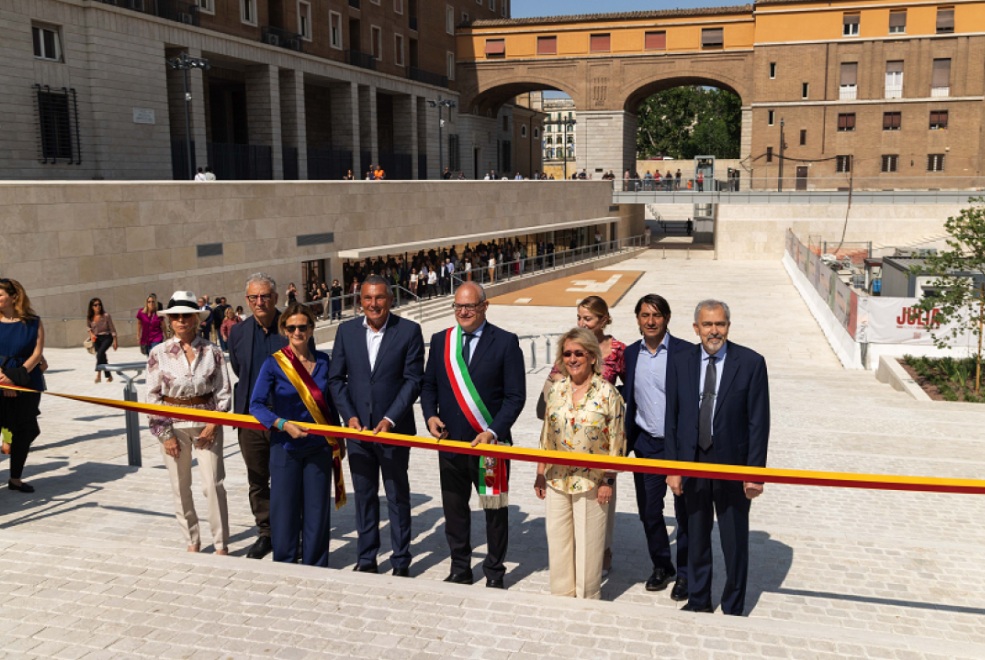Rome has inaugurated the revamped Piazza Augusto Imperatore, unveiling a new pedestrian space around the Mausoleum of Augustus after five years of construction and two decades of planning.
Mayor Roberto Gualtieri officially opened the square on Friday (6th June), calling it a major step in restoring one of the capital’s historic focal points. “We are happy to have contributed to the creation of what will become one of the most important focal points in the city of Rome,” he said.
The project, costing €35 million, was overseen by the city’s archaeological superintendency. Around €28 million came from the city itself, with €6 million donated by the TIM Foundation.
Mausoleum of Augustus redefined
The restored square redefines the setting of the Mausoleum of Augustus, the world’s largest circular tomb, constructed in 28 BC for Rome’s first emperor. Architect Francesco Cellini, winner of a 2006 international design competition, led the redesign. His plan integrates the ancient monument into the modern urban landscape while solving the long-standing issue of height disparity between the tomb and the square.
Two wide travertine slopes now link the current street level with the original base of the mausoleum, leading towards Via di Ripetta and the church of San Carlo al Corso. A new information centre and cafeteria have been added at the southern end, between Via del Corso and the Ara Pacis Museum.
The restoration of the Mausoleum itself is still underway. The first phase ended in 2019, with limited public access beginning in 2021. The second phase, due to finish later this year, includes a circular walkway overlooking the interior. The final phase, expected to conclude by late 2026, will complete the museum’s interior and lighting design. This stage is led by Dutch architect Rem Koolhaas and funded with €700,000 from Bulgari, which opened a luxury hotel opposite the site in 2023.
The ancient monument, once used as a concert hall in the late 19th and early 20th centuries, was surrounded by medieval buildings until their demolition in the 1930s under Mussolini.
Over the decades, several plans to restore the mausoleum stalled, including one aiming to reopen it by 2014 for the 2,000th anniversary of Augustus’s death. The completion of this latest phase marks a turning point in finally bringing the emperor’s tomb back into the heart of Roman life.





